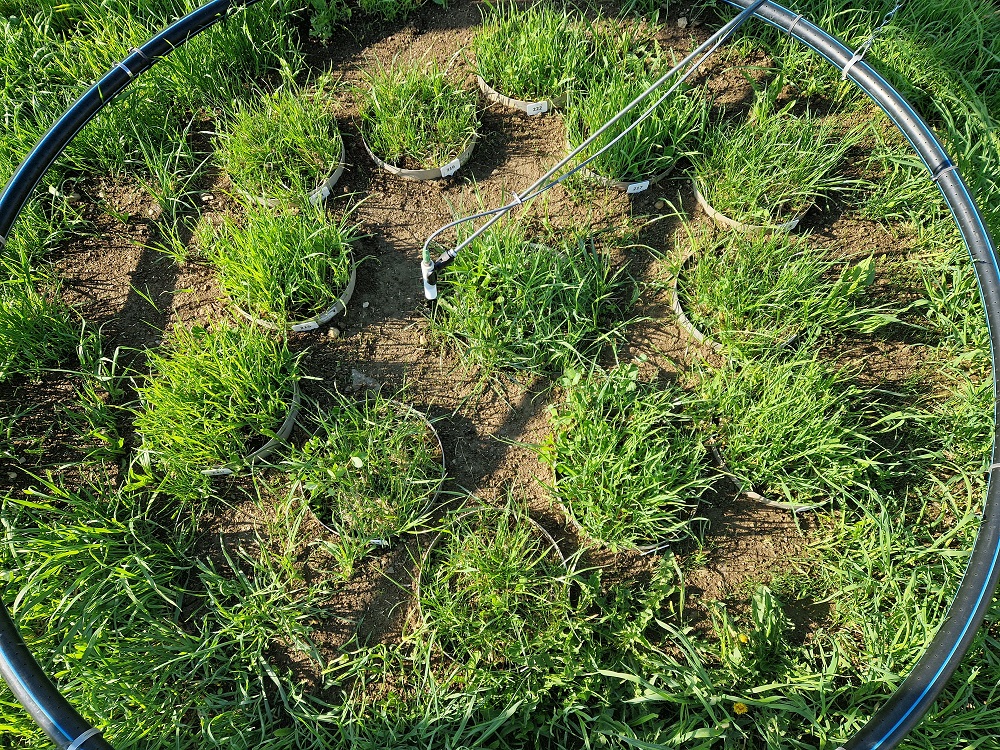In recent years, dry periods have repeatedly occurred in various grassland regions in Austria, some of which led to considerable reductions in yield. The trend towards more frequent and extreme drought events will increase in the future due to climate change with increasingly higher temperatures and unevenly distributed precipitation. Corresponding adaptation measures in grassland are therefore necessary - irrigation could be one of them.
As experience in other countries, especially South Tyrol, shows, artificial irrigation bridges dry periods with their negative effects on grassland yields with the aim of preventing total failures with lasting damage to the turf.
While there is a long tradition with a lot of experience, know-how and technical developments for irrigation in arable, fruit and vegetable farming, comparatively little research has been done in grassland. In particular, the investigation of the interaction between plant physiological and hydrological aspects can provide an important basis for the type, quantity, duration and timing of grassland-specific irrigation measures. Of particular interest is how the general conditions will change in a future climate and how these will affect irrigation parameters. They will be systematically researched in the IrriGrass project over the next three years.
Project content
IrriGrass is an extension of the ClimGrass test facility ( effects of climate change on the productivity and biogeochemistry of the permanent grassland ecosystem ), where it is possible to examine the general conditions of irrigation in a simulated future climate and thus answer the following questions:
- How will a future temperature increase due to global warming in combination with increased atmospheric CO2 concentration affect the water requirements of a typical grassland that is exposed to varying degrees of water stress?
- How does the water requirement differ under current and future climate conditions of grassland communities that are optimized for productivity on the one hand and for drought tolerance on the other?
During a growth period, natural precipitation is blocked by means of rain roofs on some of the ClimGrass plots, where a total of 48 mesocosms (defined areas with a diameter of 30 cm), which are equipped with temperature and humidity sensors, are artificially irrigated in gradations of drought-tolerant and conventional plant populations become.
team

Mag. MSc. Andreas Schaumberger
Grassland management and cultural landscape
Dr. Markus Herndl
Soil Science and Lysimetry Department, Head of the Eco-Efficiency Research Group
Ing. Reinhard Resch
Head of analytics and feed evaluation department
DI Andreas Klingler
Grassland management and cultural landscape
Matthias Kandolf
Public relations
Martina Schink
Environmental ecology
Medardus Schweiger
Grassland management and cultural landscapeSimilar projects
2424: ClimGrassEco
Influence of future climate conditions on the productivity and biogeochemistry of the permanent grassland ecosystem
2015 - 2019, Pötsch Erich M.






